Visiting in January Overview
Learn what to expect when visiting Yosemite National Park in January
Updated: 08/09/2022
Winter is a magical time in Yosemite National Park. There is nothing like watching snow blanket the granite domes and lodgepole pines. Visiting the park in January has wonderful benefits such as avoiding the crowds, as well as some drawbacks like limited access to roads because of snow. If you can make it to Yosemite in January, you will have an amazing trip and leave with an appreciation for the snow and solitude of winter in the park.
benefits of visiting in january
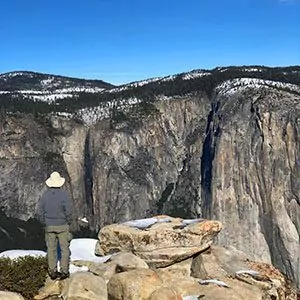 The biggest benefit to visiting Yosemite in January is the lack of crowds. Summer is the busiest time of the year, and spring and fall are also bustling—although not nearly as busy as summer. Winter is a season of peace and quiet without traffic lines through the valley or the struggle to find a parking spot. The other main benefit to visiting in January is the beauty of the snow covering the Valley’s domes or the giant sequoias of Mariposa Grove. It is truly a winter wonderland, and the low lighting in winter makes for great photography.
The biggest benefit to visiting Yosemite in January is the lack of crowds. Summer is the busiest time of the year, and spring and fall are also bustling—although not nearly as busy as summer. Winter is a season of peace and quiet without traffic lines through the valley or the struggle to find a parking spot. The other main benefit to visiting in January is the beauty of the snow covering the Valley’s domes or the giant sequoias of Mariposa Grove. It is truly a winter wonderland, and the low lighting in winter makes for great photography.
An additional benefit of visiting Yosemite in January is that you are more likely to be able to book a last-minute trip. Anyone who has tried to find a place to stay or even a campsite a month or two before their summer trip to the park knows that accommodations in the summer book up to 6 months in advance. But in the winter, if you have a few days off work or are in the area, finding a place to stay is much less of a headache, even if your trip is only a few weeks away.
While road closures due to snow can be frustrating, they are a mixed blessing as they force you to explore the areas that still can be reached. Visitors in summer often spend more of their time in Yosemite driving than sightseeing because of traffic and because there is so much to see and do. In January, visitors are made to spend their time exploring instead of driving, making for a much less hectic and more peaceful trip. While some of the bigger wildlife, like bears, will be hibernating, the snow is a beautiful tool for tracking more elusive animals such as bobcats, fisher, mink, and even mountain lions that you are more likely to see in winter because of the lack of crowds.
As an added bonus, the bugs will also be hibernating, which can greatly relieve the summer mosquitos. Another perhaps less pertinent plus for visiting Yosemite in January is the likelihood of wildfires. The summer brings lightning strike fires to Yosemite National Park every year. Even if the fire does not directly threaten visitors, the smokey conditions can still be disappointing as they shroud the park’s scenic views. In January, you are much more likely to get the crisp and clear winter air for your pictures.
drawbacks of visiting in january
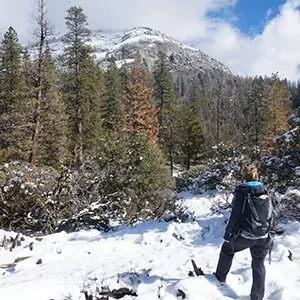 The snow in Yosemite is a double-edged sword, making it beautiful and closing many roads. The biggest drawback to visiting in January is the closures of Tioga Road and Glacier Point Road, typically closing in November and opening in late May. Highway 140 runs through the Valley and is open year-round but may have snow chain restrictions. Mariposa Grove Road is also closed in January, although you can park your car at the Mariposa Grove Welcome Plaza and walk the two-mile Washburn Trail to the grove.
The snow in Yosemite is a double-edged sword, making it beautiful and closing many roads. The biggest drawback to visiting in January is the closures of Tioga Road and Glacier Point Road, typically closing in November and opening in late May. Highway 140 runs through the Valley and is open year-round but may have snow chain restrictions. Mariposa Grove Road is also closed in January, although you can park your car at the Mariposa Grove Welcome Plaza and walk the two-mile Washburn Trail to the grove.
Besides the road closures, it’s very cold in Yosemite in January. If you aren’t prepared with warm clothing and gear that can withstand the temperatures, your trip won’t be the winter wonderland experience you hoped for. And while accommodations might be easier to find last minute in January, you will have to spend more time packing as the winter months require more gear than the summer months.
Visiting in January gives you a smaller chance of seeing Yosemite’s wildlife, such as bears and snakes, as they will be hibernating to wait out the cold.
things to do in january
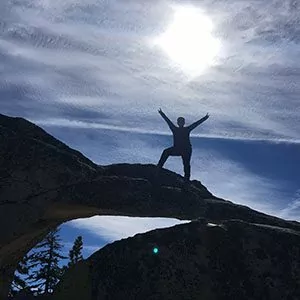 January is a great time to explore Yosemite without the crowds. The beauty and majesty of snow in the Valley make the park very photography-friendly. Ensure you catch sunrise or sunset from Tunnel View, just outside the Valley. Also, there are short but sweet hiking options in the Valley, Hetch Hetchy, Wawona, and Mariposa Grove. Visiting the Ansel Adams Gallery or the Yosemite Museum, both by the Yosemite Valley Visitor Center, are great options if the weather prevents you from spending time outside.
January is a great time to explore Yosemite without the crowds. The beauty and majesty of snow in the Valley make the park very photography-friendly. Ensure you catch sunrise or sunset from Tunnel View, just outside the Valley. Also, there are short but sweet hiking options in the Valley, Hetch Hetchy, Wawona, and Mariposa Grove. Visiting the Ansel Adams Gallery or the Yosemite Museum, both by the Yosemite Valley Visitor Center, are great options if the weather prevents you from spending time outside.
In January, a unique experience in Yosemite is cross-country skiing, downhill skiing, and snowboarding or snowshoeing at Yosemite Ski and Snowboard Area. This is a great way to see areas of the park that are closed to cars and only accessible by cross-country skis or snowshoes.
If you’re not up for the more adventurous winter sports like skiing or snowshoeing, there are plenty of opportunities for sledding, building snowmen, and other play-in-the-snow activities that the whole family will enjoy. Crane Flat and Yosemite Hospitality both host areas for snow play. There’s also an outdoor ice skating rink at curry village that offers a unique experience of skating surrounded by such breathtaking scenery. Guided bus tours also operate in the Valley year-round and are a fun way to see the beautiful winter Valley from inside a warm bus.
Hiking and backpacking in January are limited due to the sheer amount of snow. Most are short hikes and walking trails that allow you to immerse yourself in the stunning landscape. Still, there are some more adventurous options, including guided, all-inclusive hikes that allow you to enjoy the area and not worry about logistics.
Another popular activity in the winter is wildlife viewing and photography, as well as landscape photography. You don’t have to be a professional photographer or have a fancy camera to capture the stunning vistas or delight in watching the resident wildlife enjoy the less busy season the same as you do. Any of the pullouts along the road into the valley offer the classic postcard views of El Capitan, Half Dome, and the majestic waterfalls blanketed with snow all around, making for remarkable photos. While January may not seem like a good time to see wildlife, many of the more elusive animals, such as bobcats and snowshoe hares, are more likely to be seen and easier to see evidence of with tracks in the fresh snow.
Things to See in January
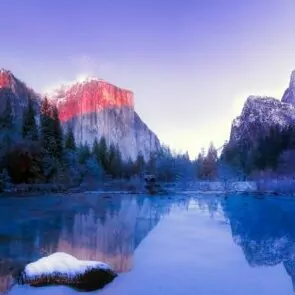 Among the many options for things to do in Yosemite in January are an abundance of sights to see and scenes that will simply take your breath away. Here is a short– non-exhaustive– list of a few of the must-sees in January.
Among the many options for things to do in Yosemite in January are an abundance of sights to see and scenes that will simply take your breath away. Here is a short– non-exhaustive– list of a few of the must-sees in January.
Granite Monoliths: Half Dome and El Capitan are the most famous, but granite cliffs of staggering height surround Yosemite Valley. These are a must-see– or perhaps more like a can’t-miss– for any season you visit the park but are staggeringly beautiful in the winter. Normally edged with the greens of the pines and aspens, in the winter, they wear perfectly white, snowy garments that give them an air entirely different from the summer. These beasts of rocks are not to be missed in a visit to the park in January.
Waterfalls: Yosemite Falls and Horsetail Falls both flow during winter, though not at their spring levels. Even so, waterfalls surrounded by snow are magnificent to see and make excellent, postcard-worthy pictures.
Wildlife: Animals are still active in the winter months, despite the cold, and lucky visitors might see some wildlife a summer guest would never dream of.
Yosemite Valley Chapel: Often not given more than a passing glance while driving by, Yosemite Valley Chapel is well worth a stop and a picture. Still an active Christian church, the chapel is straight out of a winter fairytale with red brick walls and a simple steeple. Covered in a fresh blanket of snow, your friends will think your pictures are from the ending scene of a Christmas movie.
Yosemite Falls Snow Cone: While visiting Yosemite Falls, don’t forget to take a look at the snow cone, a mountain of snow that builds at the bottom of Yosemite Falls each winter. While not the most famous winter site in Yosemite, seeing how much snow builds up at the base of these majestic falls is still worth seeing.
Glacier Point Road: If you’re up for the snowshoe or ski trek, Glacier Point Road, closed to cars in the winter, is a must-try. Offering stunning vistas and a chance to get away from the town and into the wilderness, this road is great for beginners or experts in snow sports. Unfortunately, the only way onto it in winter is by snowshoe or skiing, but we promise the views are worth the trek.
Tunnel View: The most iconic of all lookouts on the road into Yosemite Valley, the Tunnel View is the picture that everyone has with El Capitan to the left, Bridalveil Falls cascading down the cliffs to the right, Half Dome standing tall in the distance, and the Merced River snaking through the entire valley. But your pictures will stand out from the crowd as all these sights will take on a new remoteness and mystery when cloaked in snow.
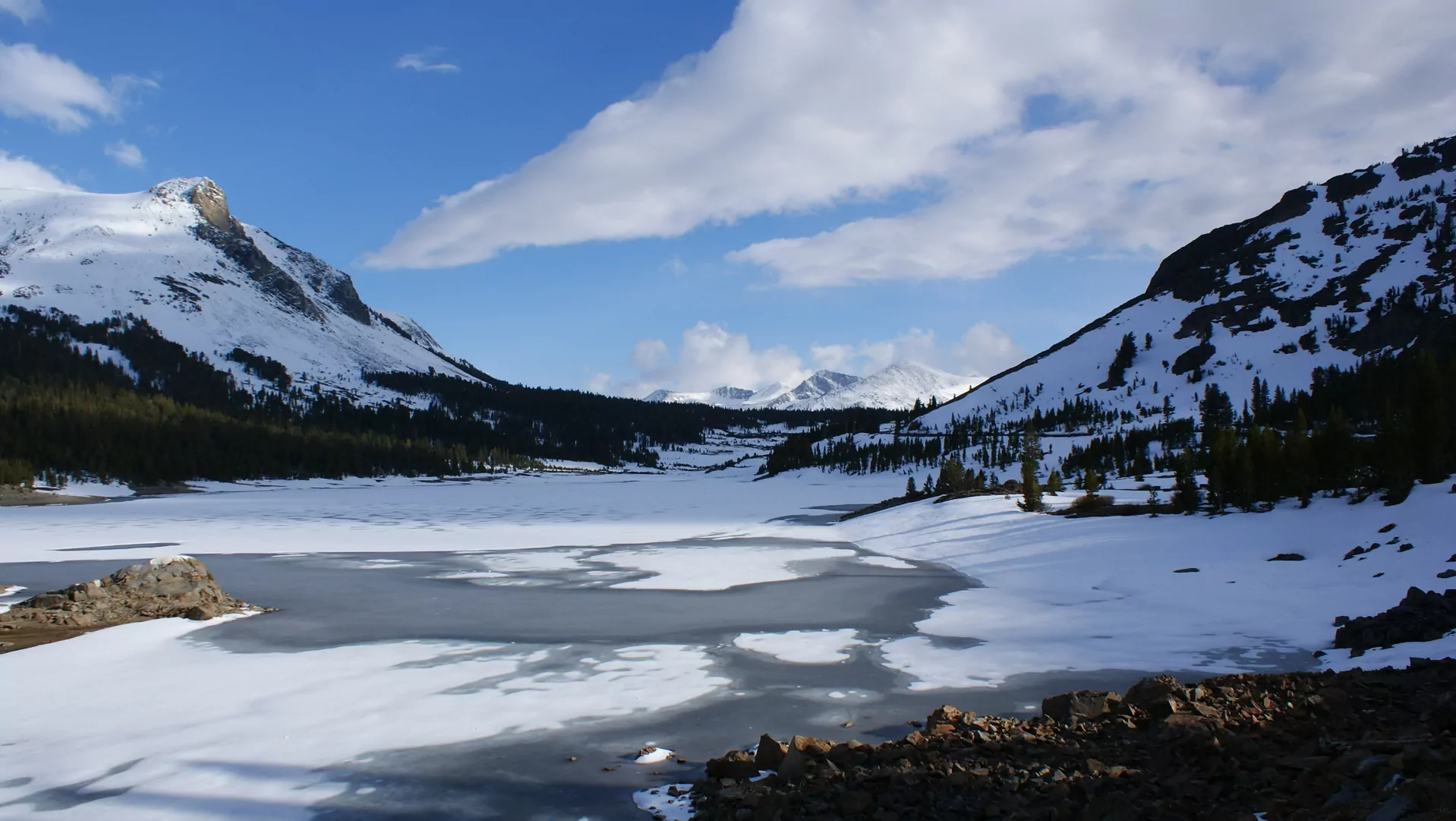
hiking in january
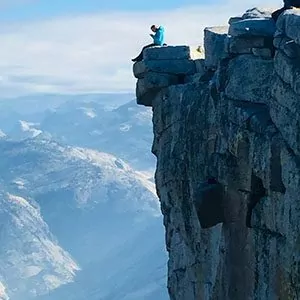 While many trails are closed for the winter, plenty are still accessible. Many of the lower trails in the Valley, such as Bridalveil Falls, Mirror Lake, Lower Yosemite Falls, and the Vernal Falls footbridge on the Mist Trail, stay open through the winter. But trails that take you higher in elevation, like Upper Yosemite Falls and the 4-mile Trail, are closed. Hetch Hetchy and Wawona remain open all year, and their trails will be snow-covered but open. You can read NPS’ current conditions before heading out for the day and check out the best Yosemite hikes for more ideas.
While many trails are closed for the winter, plenty are still accessible. Many of the lower trails in the Valley, such as Bridalveil Falls, Mirror Lake, Lower Yosemite Falls, and the Vernal Falls footbridge on the Mist Trail, stay open through the winter. But trails that take you higher in elevation, like Upper Yosemite Falls and the 4-mile Trail, are closed. Hetch Hetchy and Wawona remain open all year, and their trails will be snow-covered but open. You can read NPS’ current conditions before heading out for the day and check out the best Yosemite hikes for more ideas.
If you’re up for an adventure, snowshoeing is a great winter alternative to hiking. You can snowshoe (as well as cross-country ski) the Glacier Point road for an unmated view of the valley and Badger Pass Ski area. Dewey Point Meadow Trailhead, which branches off of Glacier Point Road, is another excellent option. The Crane Flat area also offers snowshoeing options for beginners and experts alike. The 4-mile roundtrip Clark Range View Trail is nice for beginner snowshoers and offers wonderful views of the Merced River. The Tuolumne Grove Trail will take you through a remarkable Sequoia grove if you’re up for a challenge. While shorter than Clark Range View, coming in around 2.5 miles, it is a bit of a climb and definitely a harder trek. Another great option is a snowshoe trek in Mariposa Grove, which boasts massive sequoias that you won’t want to miss
Early mornings will be very chilly in Yosemite, so be prepared with hats, gloves, warm base layers, and jackets. Plan on starting your hike around 8 or 9, and make sure you can finish it within 5-6 hours due to the shorter days of winter. Remember that micro spikes or crampons for your boots and trekking poles can be very useful for hiking in the snow and maintaining balance. Some trails may be obscured completely by the snow forcing hikers to navigate by the tall, yellow triangle trail markers that some trails have or by GPS alone. Remember that if it is actively snowing (and even if it is not), you cannot rely on your footprints to lead you back to the trailhead.
BACKPACKING in January
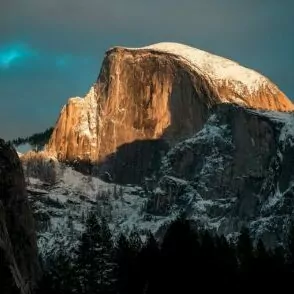 Traditional backing in Yosemite in January is very nearly impossible. Any of the trails that lead higher out of the valley, such as the John Muir Trail, which begins in Yosemite Valley, are impassable because of the snow. But if you really want to try out your four-season tent and your sleeping bag rated for -10 degrees, Yosemite still has some options. You can try out your winter gear at base camp in the campgrounds that remain open in the winter, allowing for a snow-free but cold experience.
Traditional backing in Yosemite in January is very nearly impossible. Any of the trails that lead higher out of the valley, such as the John Muir Trail, which begins in Yosemite Valley, are impassable because of the snow. But if you really want to try out your four-season tent and your sleeping bag rated for -10 degrees, Yosemite still has some options. You can try out your winter gear at base camp in the campgrounds that remain open in the winter, allowing for a snow-free but cold experience.
As an alternative to traditional backpacking, some snowshoe and cross-country ski trails allow overnight stays. There are a few marked trails on Glacier Point Road and in the Crane Flats and Mariposa Grove areas as well as two overnight ski huts, one at Glacier Point and the other at Ostrander Lake. These basic stone and brick structures provide rustic accommodations for those looking for adventure. Only advanced skiers should attempt the trail to Ostrander Lake, but beginners can make it to the hut on Glacier Point. Reservations and/or wilderness permits are required for overnight stays.
weather in january
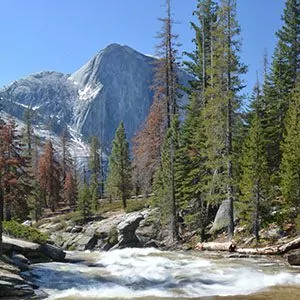 Yosemite National Park encompasses much more only Yosemite Valley, so weather conditions vary drastically depending on where you are. Of course, in winter, other sections of the park at higher altitudes, such as Tuolumne Meadows, are only accessible on skis. Generally, Yosemite in January is typically very cold across the park, with a good amount of snow. Although sunny days with warmer temperatures are not too uncommon, the average temperature in Yosemite Valley and Wawona in January is a high of 48 and a low of 28 degrees Fahrenheit (9/-2 degrees Celsius). On average, it snows eight days in January. Water levels tend to be low, although some falls still tumble over the mighty cliffs but not at spring levels. The mornings and evenings will be crisp and chilly, so best to plan extended outdoor activities in the afternoons as long as you have enough time to complete your adventure before the early onset of winter nights.
Yosemite National Park encompasses much more only Yosemite Valley, so weather conditions vary drastically depending on where you are. Of course, in winter, other sections of the park at higher altitudes, such as Tuolumne Meadows, are only accessible on skis. Generally, Yosemite in January is typically very cold across the park, with a good amount of snow. Although sunny days with warmer temperatures are not too uncommon, the average temperature in Yosemite Valley and Wawona in January is a high of 48 and a low of 28 degrees Fahrenheit (9/-2 degrees Celsius). On average, it snows eight days in January. Water levels tend to be low, although some falls still tumble over the mighty cliffs but not at spring levels. The mornings and evenings will be crisp and chilly, so best to plan extended outdoor activities in the afternoons as long as you have enough time to complete your adventure before the early onset of winter nights.
The gateway to Yosemite on the southwest side, the town of Oakhurst, has lows in the 20s and highs in the 60s in January with less snow than the valley, while the northeastern gateway, Lee Vining, which will only be used by skiers in the winter, has lows in the low 20s and highs in the 40s.
It’s best to prepare for the toughest conditions that you might face when traveling to Yosemite in the winter. While it may be that your trip consists of mostly sunny days on the warmer side, at least the evenings will be very cold. Snow presents another complicating factor when packing, as some materials lose their warmth if they get wet. While Yosemite is in one of the most mild mountain ranges in the world, it is still the mountains, and the weather can change quickly.
While natural wildfires are less likely to occur in the winter months, the National Parks Service does occasionally burn mimic wildfires for the health of the forest, which can create hazy or smokey afternoons.
Wildlife in January
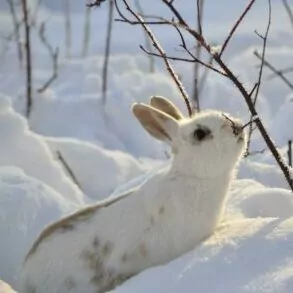 While wildlife viewing may not seem to be a draw to Yosemite in January, your opportunities for seeing the local species abound in the colder seasons. While you are not likely to see bears or snakes because of their hibernation in the winter, other wildlife rarely seen in the summer is more visible in the snow. Animals that are unusual to see in the summer, such as snowshoe hares, otters, and minks, are easier to catch glimpses of due to the lack of crowds and the winter behavior of these animals. Birds such as eagles, owls, and waterfowl abound and are wonderful subjects for photography. Hunting coyotes, often seen in summer as well, are entertaining to watch and are often found even around campgrounds. Of course, the mule deer that are as tame as can be in the summer (but still, please don’t approach them) are beautifully set against snowy backdrops in the winter. If you’re really adventurous and want to trek into the backcountry with snowshoes or skis, you might be able to see– or at least see the footprints of– some of the more elusive animals like bobcats, mountain lions, or even the Sierra Nevada Red Fox. Fresh snow makes for a great opportunity to see the evidence of these creatures, as their footprints are perfectly preserved and clear for visitors to see.
While wildlife viewing may not seem to be a draw to Yosemite in January, your opportunities for seeing the local species abound in the colder seasons. While you are not likely to see bears or snakes because of their hibernation in the winter, other wildlife rarely seen in the summer is more visible in the snow. Animals that are unusual to see in the summer, such as snowshoe hares, otters, and minks, are easier to catch glimpses of due to the lack of crowds and the winter behavior of these animals. Birds such as eagles, owls, and waterfowl abound and are wonderful subjects for photography. Hunting coyotes, often seen in summer as well, are entertaining to watch and are often found even around campgrounds. Of course, the mule deer that are as tame as can be in the summer (but still, please don’t approach them) are beautifully set against snowy backdrops in the winter. If you’re really adventurous and want to trek into the backcountry with snowshoes or skis, you might be able to see– or at least see the footprints of– some of the more elusive animals like bobcats, mountain lions, or even the Sierra Nevada Red Fox. Fresh snow makes for a great opportunity to see the evidence of these creatures, as their footprints are perfectly preserved and clear for visitors to see.
Recommended Wildland trips in January
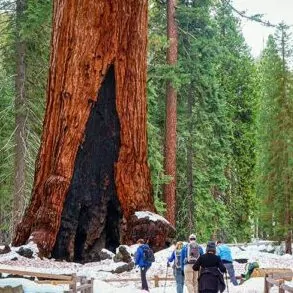 Traveling to Yosemite in winter is an amazing experience, but the snow, cold, possibility of bad weather, and logistics of finding safe activities can be intimidating. If you want to experience this park in the colder months but don’t want the headache of planning out your trip, Wildland Trekking offers a selection of trips that are designed especially for winter in Yosemite so that you can enjoy this unique season without the hassle or stress. Feel free to explore all our day hiking options or our winter tours, but here are a couple we especially recommend in January.
Traveling to Yosemite in winter is an amazing experience, but the snow, cold, possibility of bad weather, and logistics of finding safe activities can be intimidating. If you want to experience this park in the colder months but don’t want the headache of planning out your trip, Wildland Trekking offers a selection of trips that are designed especially for winter in Yosemite so that you can enjoy this unique season without the hassle or stress. Feel free to explore all our day hiking options or our winter tours, but here are a couple we especially recommend in January.
Yosemite Autocamp Winter Hiking Tour: This tour is not to be missed as you and your fellow travelers enjoy the beauty of Yosemite with almost no one around and an expert guide to show you the way. Each day of this 4-day tour will find the group embarking on day hikes or snowshoe treks through the accessible regions of the park. Perhaps just as fun as the hiking will be the accommodations at Yosemite Autocamp, where guests will have private Airstream accommodations to watch the snow fall. You’ll visit Badger Pass, a grove of giant sequoias, and get a thorough taste of what Yosemite has to offer in January.
Mariposa Snowshoe Private Tour: If you were looking forward to doing some of the planning for your Yosemite excursion in January, Wildland Trekking still has options for you, especially if you’ve never visited the park before in the winter. This day hike or snowshoeing trek leads you to the wonders of Mariposa Grove, perhaps the most famous of all Yosemite’s giant sequoias groves. You won’t want to miss this hike that includes lunch and snacks, a day pack, snowshoes, trekking poles, and an expert guide to lead you.
JOIN A GUIDED HIKING ADVENTURE
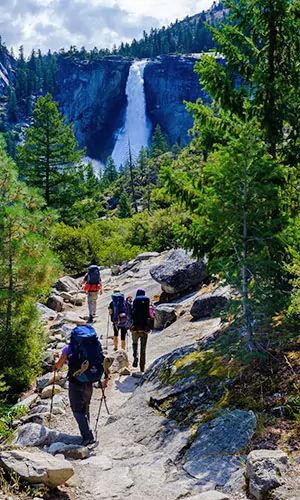 Yosemite National Park is home to some of the world’s most epic and amazing hiking vacations. Wildland Trekking offers trips with the best of Yosemite: waterfalls, views, wildlife, solitude, adventure, and fascinating natural and cultural interpretation.
Yosemite National Park is home to some of the world’s most epic and amazing hiking vacations. Wildland Trekking offers trips with the best of Yosemite: waterfalls, views, wildlife, solitude, adventure, and fascinating natural and cultural interpretation.
Guided Yosemite treks are all-inclusive, which covers permits; local transportation (excluded on certain tours); meals; equipment; safety systems, and professional hiking/wilderness guides; all of which allow visitors to maximize their time in Yosemite and focus entirely on enjoying the Park.
YOSEMITE ADVENTURE TOURS
GUIDED BACKPACKING ADVENTURES: these are for people interested in an authentic Yosemite hiking adventure away from the roads and crowds.
PORTERED TRIPS: on these innovative trips, guests hike with light day packs and camp near stunning backcountry locations.
INN-BASED PACKAGES: these tours are all-inclusive packages with lodging, amazing daily hikes, expert guides, meals, transportation, and more!
CAMPING-BASED HIKING PACKAGES: camping-based hiking packages provide all-around hiking experiences of Yosemite on wonderful outdoor vacations.
DAY HIKE TOURS: maximize your day in Yosemite on a fully guided, award-winning hiking tour on one of the Park’s best trails.






